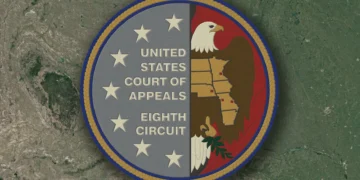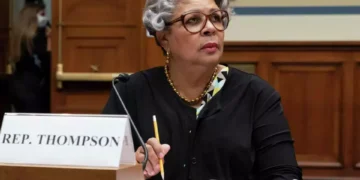March 29, 2025 Story by: Editor
President Donald Trump signed an executive order on Thursday aimed at “restoring truth and sanity to American history.” The order criticizes efforts that allegedly undermine the nation’s achievements by portraying its founding principles and historical milestones in a negative light. It calls for the removal of “divisive race-centered ideology” from the Smithsonian’s museums and research centers and directs the Secretary of the Interior to restore public monuments, statues, and historical markers that have been removed or altered since 2020. However, the exact scope of the order’s impact remains uncertain.
The order instructs the Interior Secretary to determine whether any statues, memorials, markers, or properties under the Department of the Interior’s jurisdiction have been removed or changed in a way that “perpetuates a false reconstruction of American history,” “minimizes the value of historical figures,” or includes “improper partisan ideology” since January 1, 2020. If such removals are found, the Department must reinstate the affected monuments.
The Department of the Interior, which oversees the National Park Service (NPS), the Bureau of Indian Affairs, and nine other bureaus, did not respond to NPR’s request for comment on the executive order.
Executive Order Targets Historical Interpretations
The directive further requires the Department of the Interior to ensure that monuments, statues, and memorials under its jurisdiction do not contain “descriptions, depictions, or other content that inappropriately disparage Americans past or living (including persons from colonial times).” Instead, the order emphasizes that historical narratives should focus on the achievements and progress of the American people and, in the case of natural landmarks, highlight their “beauty, abundance, and grandeur.”
The debate over race and historical monuments intensified following the 2020 killing of George Floyd by police, which sparked a nationwide reckoning on racial justice and public memory. According to the Southern Poverty Law Center (SPLC), over 200 Confederate symbols were removed, relocated, or renamed within 18 months of Floyd’s death.
However, Seth Levi, Chief Program Strategy Officer at the SPLC, noted that many of these removals did not occur on Department of the Interior lands. “Even for the objects that are on public land, it’s normally land that’s owned and controlled by municipalities or state governments. I’m not actually aware of any removals on National Park Service land,” Levi stated. “There have been removals on land controlled by the Department of Defense, such as renaming military bases, but it’s unclear how many monuments have actually been removed that this order would apply to.”
While the order’s immediate impact may be limited, Levi argued that the Trump administration is attempting to “minimize the fact that enslavement was a huge part of our history” and that contributions from racial minorities to American history “seem to be under threat.” He pointed to SPLC research, which shows that many Confederate monuments and place names were erected during the Jim Crow era and around the time of the 1954 Supreme Court decision in Brown v. Board of Education, which ruled racial segregation in schools unconstitutional.
National Park Service Already Adjusting Historical Content
Thursday’s executive order follows other recent changes to National Park Service (NPS) websites. After Trump’s January executive order on gender ideology, which declared that “it is the policy of the United States to recognize two sexes, male and female,” the NPS removed all references to transgender individuals from the Stonewall National Monument website. It also deleted pages featuring information about transgender activists Marsha P. Johnson and Sylvia Rivera.
The National Parks Conservation Association (NPCA), a nonpartisan group advocating for the protection of national parks, expressed concerns over the implications of Trump’s new order. “Across the country, our national parks protect vital American history, from the birthplaces of American presidents to the birthplaces of our democracy,” said Alan Spears, a senior director at the NPCA. “Our parks tell stories from the civil rights movement, the Civil War, and beyond. Every American who cares about our country’s history should be worried about what people, places, and themes will disappear next.”
Source: NPR

















